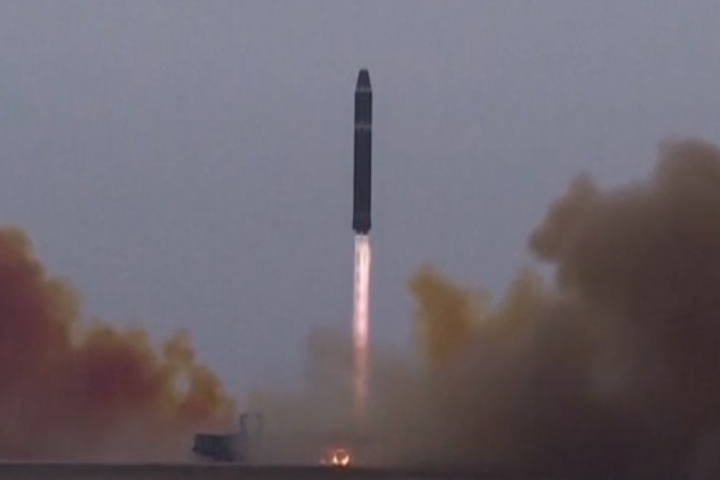


SEOUL, South Korea—North Korea fired a short-range ballistic missile toward the sea on Sunday, according to its neighbors, ratcheting up tests in reaction to ongoing US-South Korean military games that it sees as a rehearsal for an invasion.
Despite the largest-ever US-South Korean drills in years, the North's continued missile testing demonstrated its determination not to back down. Many analysts, though, believe the tests are part of North Korea's larger goal of expanding its weapons arsenal, gaining worldwide recognition as a nuclear power, and lifting international sanctions.
According to South Korean and Japanese estimates, the missile fired from the North's northern Tongchangri region travelled across the nation before landing in waters off the country's east coast. They said the missile flew 800 kilometers (500 miles), implying that the weapon might hit South Korea.
The senior nuclear envoys of South Korea, Japan, and the United States spoke over the phone about the launch, which they strongly denounced as a provocation that undermines peace on the Korean Peninsula and in the area. According to Seoul's Foreign Ministry, they decided to increase their cooperation in order to issue a forceful international reaction to the North's move.
South Korea's military said it will complete the remaining joint exercises with the US and be ready to respond "overwhelmingly" to any provocation by North Korea. According to South Korea's Defense Ministry, the US flew long-range B-1B bombers for joint training with South Korean jets on Sunday as part of the drills.
North Korea is extremely concerned about the deployment of B-1B bombers, which can carry massive conventional weapons payloads. In response to the B-1B flights in February, it test-launched missiles with potential ranges to hit several South Korean air facilities.
According to Japanese Deputy Defense Minister Toshiro Ino, the missile fell beyond Japan's exclusive economic zone, and no boats or planes were damaged. He stated that the missile had an erratic trajectory, which might be a reference to North Korea's highly maneuverable, nuclear-capable KN-23 missile, which was modeled after Russia's Iskander missile.
The newest launch, according to the US Indo-Pacific Command, does not represent an imminent danger to US territory or its allies. Nonetheless, it stated that the North's latest launches illustrate "the destabilizing consequences of its illicit" weapons programs and that the United States' security commitment to South Korea and Japan is "ironclad."
The launch marked the North's third set of missile testing since the US and South Korean forces began joint military exercises last Monday. The training, which include computer simulations and outdoor exercises, are scheduled to go through Thursday. Since 2018, the field exercises have been the largest of their type.
The North's first ICBM launch in a month, on Thursday, brought harsh condemnation from Seoul, Tokyo, and Washington. That took place only hours before South Korean President Yoon Suk Yeol travelled to Tokyo for a high-profile meeting with Japanese Prime Minister Fumio Kishida.
Yoon and Kishida agreed at the summit to restart their military discussion and expand security cooperation with the US in order to oppose North Korea and solve other concerns.
Relations between Seoul and Tokyo have suffered a significant setback in recent years as a result of tensions emanating from Japan's colonial domination of the Korean Peninsula from 1910 to 1945.
However, North Korea's record missile tests last year—it launched more than 70 missiles in 2022 alone—prompted Seoul and Tokyo to seek stronger trilateral security partnerships involving Washington, which also wants to strengthen its Asian alliances to deal with China's influence and North Korean nuclear threats.
North Korea possesses missiles capable of attacking Japan. North Korea launched an intermediate-range missile over northern Japan last October, prompting evacuations and train delays.
According to Ino, Japan's vice defense minister, Kishida ordered an immediate reaction following the launch on Sunday, including tight collaboration with South Korea and the United States.
North Korea also launched cruise missiles from a submarine a day before the tests began. The North's official media claimed the submarine-launched missile was a proof of its determination to respond to the United States' and South Korea's increasing military drills with "overwhelming strong" force.
According to South Korean media sources, the US and South Korea want to conduct additional training involving a US aircraft carrier later this month, when their current drills conclude. This means that tensions on the Korean Peninsula may persist for a few more weeks, as North Korea is expected to respond to the drills with missile tests.